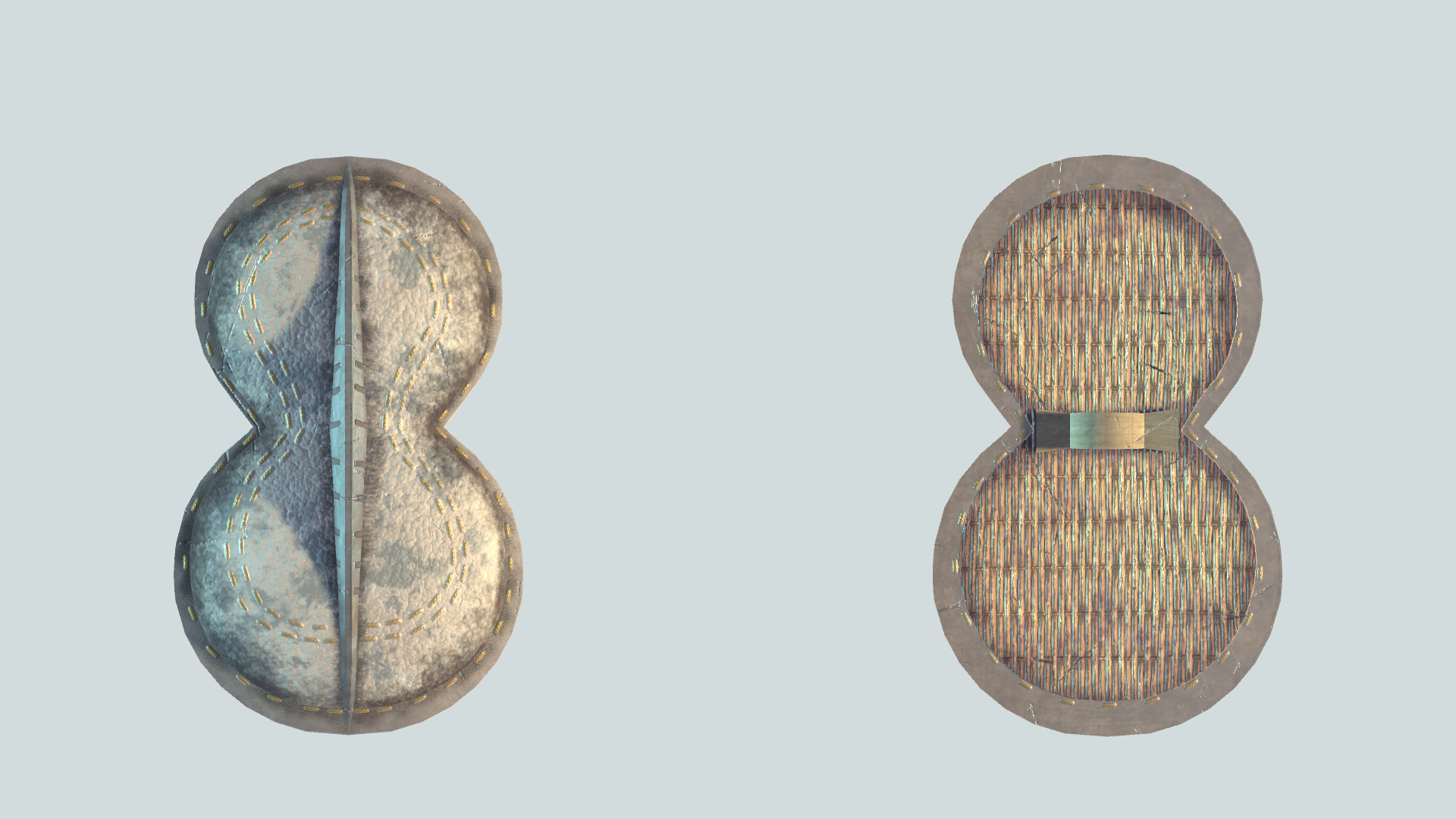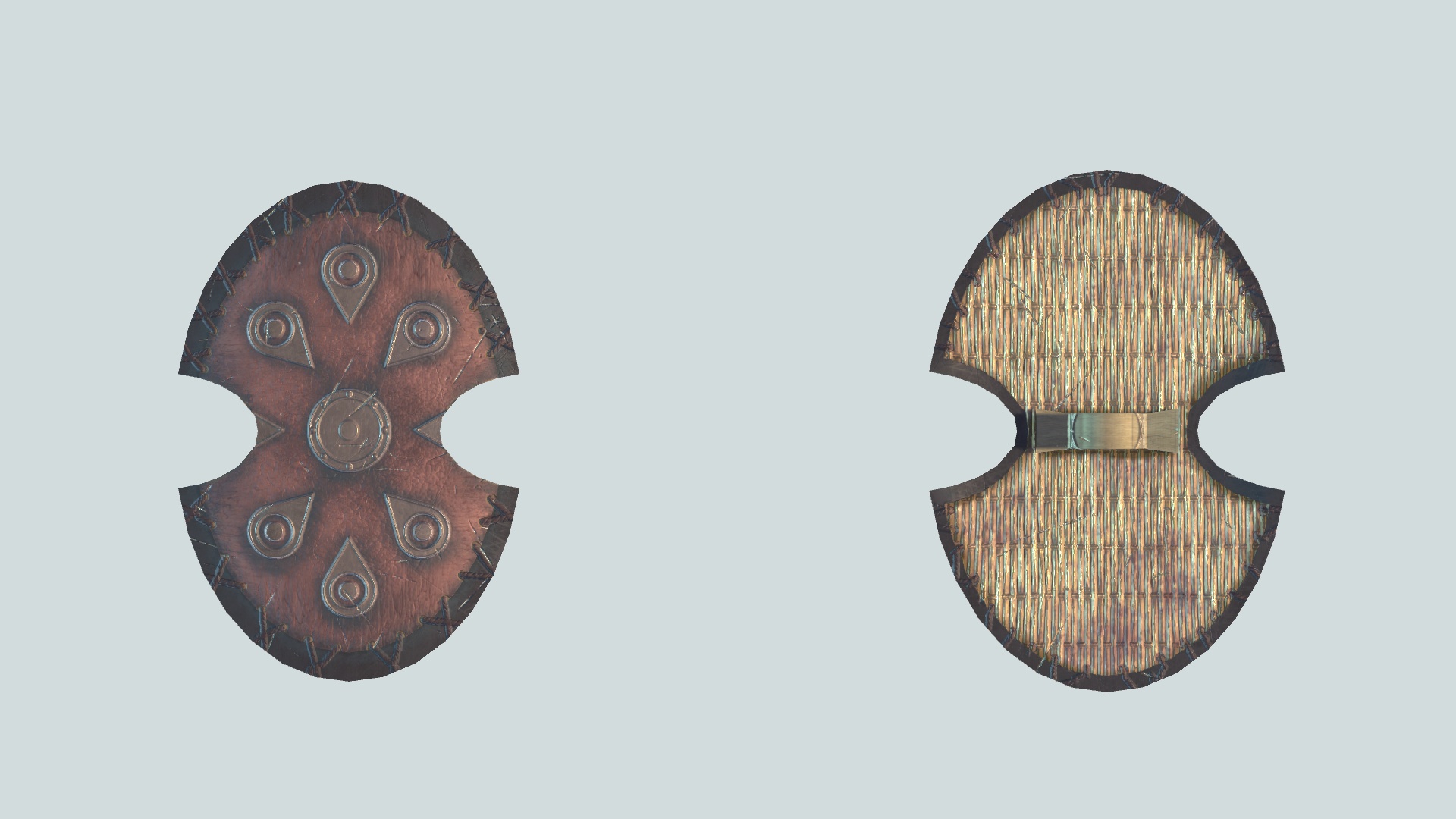Shields of the Bronze Age
These game-ready Greek shields are my attempt to recreate, as faithfully as possible, shields from various periods of ancient Greece. I aimed to replicate shields as close to their historical counterparts as possible, using references from pottery, vase paintings, and historical texts.
Each shield showcases not only a distinct shape and size but also the materials, construction techniques, and artistic details of its period.
Research & Inspiration
To capture authenticity, I studied Greek vases, which often depict battle scenes and ceremonial uses of these shields. The artistic patterns on these vases informed both design and texture, while historical records and surviving artifacts provided details on the construction materials. Each shield reflects different evolutions of Greek warfare and culture, spanning from Bronze Age to the Classical period.
Shield Types & Construction
Tower Shield (1600-1250 BCE): This massive, rectangular shield was commonly made with wooden or wicker frame, covered in animal hides. Used in the Mycenaean era, its size offered ample protection for heavily armored warriors.
Figure-of-Eight Shield (1500-800 BCE): Named for its unique shape, this shield was another Mycenaean icon, built with a wood frame and animal hide. The figure-of-eight design may have helped balance the shield’s weight while offering flexibility in defense.
Dipylon Shield (1000-800 BCE): Measuring approximately 3x4.1 feet, this oval shield with indents at each side used wicker frame and was typically covered with hide and embossed leather. Found in artwork frome the Geometric period, it represents Greece’s transition towards smaller, more maneuverable shields.
Boeotian Shield (900-700 BCE): With a frame of wicker and leather sheeting, this shield, around 3x3.8 feet, featured a double-lobed design. It represents a shift in Greek warfare as shields became lighter and circular, improving warrior mobility.
Aspis (Classical Period): Known for it’s iconic round shape, this 3-foot diameter shield had a wooden frame, often rimmed with bronze. Covered in leather or thin bronze sheeting, it’s the most recognised Greek shield, commonly associated with hoplites.
Pelte (Post-Classical): The Pelte was lighter, around 2.8 feet across, and typically featured a wicker or wooden frame with goat or sheep hide. Without a metal rim, it allowed greater agility, especially in skirmishes and lighter formations.
Process & Techniques
For each shield, I focused on replicating the texture and materials from historical accounts and art. I layered textures to achieve the look of hide, leather, and wicker, using Substance Designer to emulate the aged, battle-worn surfaces found in archeology.
Bringing the Shields to Life in Games
These shields are designed for game use, balancing historical accuracy with visual clarity. Each piece is optimised to maintain authenticity while also performing well in real-time engines, ensuring that players experience the aesthetic and functional elements of ancient Greek weaponry.
























